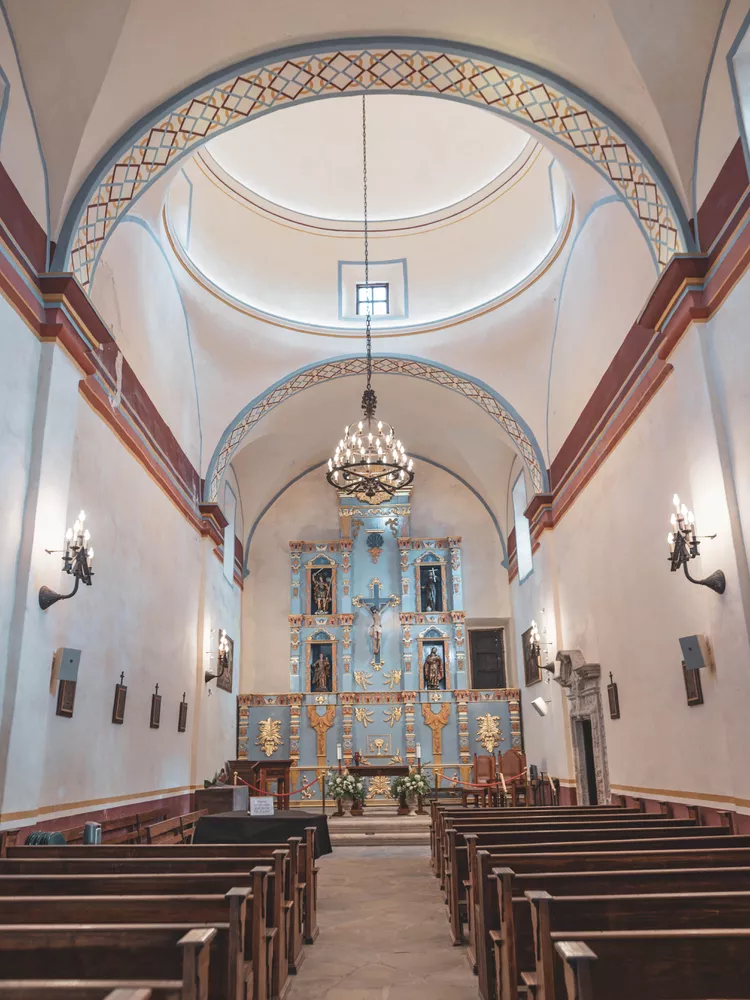Summary
The Alamo: Site of the Famous Battle
History
Long before the historic battle, the Alamo was known as San Antonio de Valero. Originally built in 1744, this mission served as headquarters for Spanish efforts to convert local tribes to Catholicism. Beyond the religious goals, Spanish missionaries aimed to integrate Native Americans into Spanish society by teaching skills such as blacksmithing, farming, masonry, and carpentry.
The structure was referred to as the Alamo after a group of Mexican soldiers known as “The Alamo Company,” who hailed from the town of Alamo de Parras, took over.
The 1836 battle at the Alamo cemented its place in Texas history. Although the Texians lost that battle to a larger Mexican army led by General Santa Anna, the rallying cry “Remember the Alamo” ultimately propelled the rebels to victory.
How to Visit
Visiting the Alamo is free; however, consider taking the guided tour that utilizes a radio headset for an enriched historical experience. Located in downtown San Antonio, the site tends to be overcrowded in the afternoon, so an early visit is advisable. Unlike the other missions, the Alamo is not part of the National Parks Service. The Texas General Land Office oversees it, while the Daughters of the Republic of Texas manage daily operations.
Mission Concepcion: Colorful Frescoes Inside
History
Established in 1755, Mission Concepcion was renowned for its vibrant frescoes and geometric designs during its early years. Although external paintings have faded, some interior frescoes provide a glimpse of the church’s original glory. Notably, it is the oldest church in the United States that has never undergone extensive renovation due to its solid construction directly on bedrock, with walls thicker than 40 inches.
How to Visit
Admission and tours are free. For families, the nearby Concepcion Park is an excellent spot for picnics and allows children to enjoy playtime.
Mission San Jose: Queen of the Missions
History
The largest of the San Antonio missions, Mission San Jose is often referred to as the “queen of the missions.” Built in 1720, it became a significant social center by the 1780s, home to about 350 Native Americans who worked the surrounding fields and tended livestock. Its size and operations attracted the attention of local Apache and Comanche tribes. Nevertheless, the mission’s high thick walls provided effective defense against invaders. The mission features intricately designed elements, such as the stunning Rose Window near the south wall, and underwent extensive remodeling in the 1930s to restore its original design.
How to Visit
Free tours led by rangers occur seven days a week at various times. Mission San Jose also serves as the visitor center for the other three missions within the National Park Service. Visitors can collect brochures and watch a 30-minute film titled Gente de Razon, offering insight into life during the missions’ heyday in the 1700s. The Mission Reach segment of the San Antonio River Walk is accessible from Mission San Jose, featuring an eight-mile trail that meanders through nature and picnic areas while providing easy access to three additional missions.
Mission San Juan: Booming Agricultural Operation
History
Constructed in 1756, Mission San Juan primarily functioned as an agricultural hub. The surrounding fields yielded grapes, melons, peppers, and sweet potatoes, with some fields featuring irrigation systems. By the 1760s, over 200 Native Americans lived here, contributing to the mission’s self-sufficiency, which helped it endure several difficult years and epidemics of smallpox. A segment of the irrigation system has been restored to demonstrate this early innovation to modern visitors.
How to Visit
There is no admission fee. Visitors can also enjoy a walk along the Yanaguana Trail, connecting to the San Antonio River, where the area has returned to its natural state, attracting local birds and native plants.
Mission Espada: Distinctive Three-Bell Tower
History
Constructed in 1756, Mission Espada played a crucial role in teaching Native Americans various trades such as blacksmithing, weaving, and carpentry. The mission produced its own bricks and tiles, while its nearby fields yielded crops like corn, peaches, beans, and melons. Notably, Mission Espada boasts a well-preserved section of the original acequia irrigation system, including an aqueduct and a small dam, which remains the oldest irrigation system in the country still in continuous use. Its distinctive look is due to the three-bell tower situated above the main entrance; visitors should take a moment to admire the ornate stonework on the arch above the front door before entering.
How to Visit
Admission and guided tours are always free.





